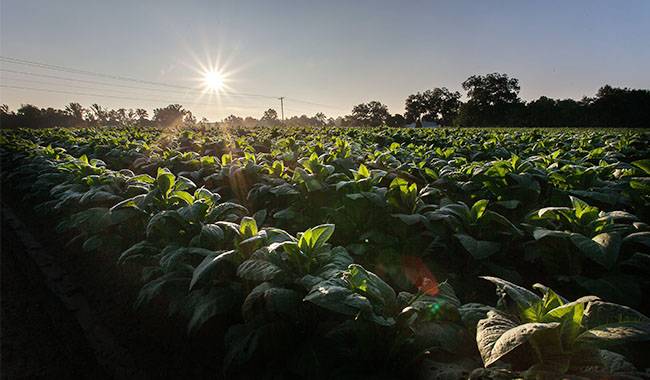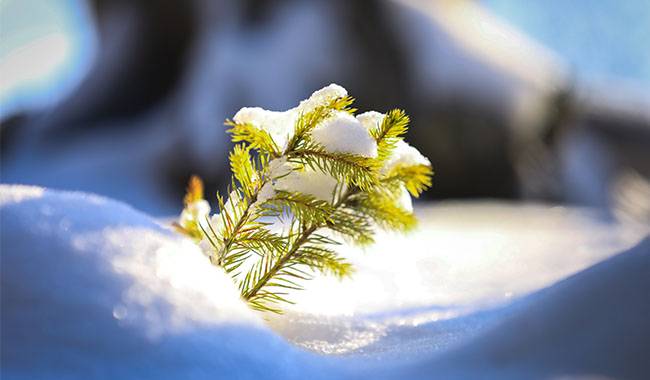
Many novice gardeners become complacent in late fall and leave their flower beds until spring. However, those of us who have been tending the soil for years know that the garden’s condition going into winter will largely determine next year’s harvest and bumper harvest. Therefore, before you can afford to rest, you need to perform some agronomic practices that will be the basis for good development and fruiting of vegetable crops and less trouble next year.
Rule 1. Cleanliness!
The main rule to get a high yield with minimum labor is neatness! Just how meticulously we clean our beds determines to a large extent the disease and pest infestation of the beds. Most of these enemies of the gardener do not just infest the plants during the season but stay on the plant fragments, successfully overwintering and infecting the crop in the following seasons.
Thus, crop residues, weeds, and wind-blown debris may accumulate in the bed even if the current year’s harvest has been carefully harvested. These should be collected and carefully composted before winter, and diseased plant parts should be removed from the plot or burned.
Rule 2. Dig in the fall to prepare the soil for spring planting
In addition to cleaning up the surface soil, the soil needs to be turned in the fall. Many gardeners argue about this, but if you look at the benefits of fallowing, it seems to be beneficial and not harmful. Why?
The soil freezes better, which is good for preventing fungal, viral, and bacterial infections and insect pests that spend the winter in the soil. It becomes more oxygenated. It is looser. Gives the snow better adhesion on top of the snow. Absorbs spring moisture better. Some of the weed seeds that fall on its surface during the growing season come to a depth where they cannot rise. And in spring, it is easier to take care of seedbeds that have been treated since autumn.
In addition, it is recommended to apply basal fertilizer, lime, clay, and other soil amendments under autumn digging. Only in the fall can the topsoil be deepened for soil amendment.
Fall tillage, especially on heavy clay and acid soils, cannot be replaced by spring tillage because the challenges and advantages are different. Only on light soils can this agricultural practice be abandoned in favor of spring work, with surface loosening instead of fall digging.
A.What is the correct way to loosen soil in autumn?
To achieve maximum results with fall digging, it is necessary to prepare well in advance.
- The first stage – clearing the plants planted in the bed
- Phase 2 – Surface loosening to provoke a new round of weed growth.
- Phase 3 – Pre-winter digging itself.
Fall tillage usually takes place at the end of September (where winter starts earlier) and continues until the end of October (where fall temperatures gradually rise). The main thing is to find the right time before the rainy season starts.
The soil coming out of the shovel is not loosened but left there in clumps. In this case, it can freeze better, accumulate more snow and, where there is a slight slope, retain the spring meltwater.
The depth of excavation depends on the ploughing layer. Usually, it is about 8 inches (20 cm), but in general, it should be between 6-13 inches (15-35 cm).
On soils that need to be improved every three years, the excavation depth should be increased by 1-2 inches (2.5-5 cm), and the soil layer must be turned, and fertilizer applied.
On well-tilled soils, the soil layer should not be turned during fall digging.
Rule 3. Disinfection
It often happens that the crop in the seedbed is so badly damaged by disease that the soil must be decontaminated. A good solution here is to not only dig deep into the soil but also to sow spiderwort (e.g. white mustard), apply semi-decomposed cow manure, spread ash, treat the soil with any microbial preparation and scald the soil with boiling water.
If possible, you can incorporate nutrients from marigolds into the soil. In the absence of these things, spread straw around the bed and burn it.
There are chemicals for soil disinfection, but they must be used very carefully: bleach – apply 6 months before planting at a rate of 100-200 grams per 11 square feet, Bordeaux mixture and 2% copper sulfate – use no more frequently than once every 5 years due to the copper content.
Rule 4. Fall fertilization
As mentioned above, the best time to apply basic fertilizer to your vegetable garden is when you dig in the fall. During this period you can add organic fertilizers, phosphorus, and potassium, and if necessary, lime, deoxidizer, clay, and sand.
When applying organic fertilizer, cow manure is the best choice. Spread it on the surface of the bed at 6.6-13 Lb (3-6 kg) per 11 square feet and turn it over thoroughly, burying it in the soil the same day to a depth of 6 inches (15 cm).
The results of manure application can be observed within 4-7 years (depending on soil type), so it is not necessary to apply every year but should be done every 3-4 years. In addition, not all crops respond well to it, so it is applied under the most responsive crops – potatoes, cucumbers, cabbage, tomatoes.
A more effective option is a combination of organic and mineral fertilizers. But here we must remember that it does not make sense to apply nitrogen fertilizers under fall digging, only phosphorus, and potassium groups. Potassium sulfate can be a good choice here – it contains calcium, magnesium, and no chlorine and can be applied to all soils. It is suitable for light sandy and sandy loamy soils, calimag. Phosphate fertilizers – calcium superphosphate, phosphate powder.
Narrow compound fertilizers marked “Autumn” are a very good choice for the late autumn application. Today you can find them on the market, not only with recommendations for use under specific crops but also in packages labeled “for strawberries” and “for grapes.” This makes the choice easier and ensures the correct application.
Rule 5. Warm seedbeds
With a good host, nothing goes to waste. Therefore, when the harvest of plant trimmings is nearing its end, many gardeners make up a warm bed. Plant debris, fallen leaves, and cut branches go into the dug trenches. In the winter, it all decomposes and becomes great nourishment for the plants.

Rule 6. The earth must not be barren
In areas exposed to strong winds, on slopes, and where the soil is already in need of renewal, it is a good idea to use green manure planted in winter. This could be winter wheatgrass, winter rye, winter comfrey, or oats.
In addition to the fact that their roots will loosen the soil and their vegetation will make an excellent organic fertilizer, these crops provide other benefits: they will retain snow on the soil surface, protect the soil from leaching and weathering, and protect plants (such as strawberries) from spring frosts that return.
Rule 7. Winter sowing
It is a good idea to consider planting winter crops early in the winter. Cultivars planted in the fall will emerge two weeks earlier, producing hard, disease-resistant seedlings, saving you time in the spring, and allowing you to reseed. The most common crops to sow in the winter are carrots, beets, lettuce, dill and parsnips, winter garlic, and onions.
Do not start seeds in winter conditions until thermometer readings have stabilized around 32 °F (0°C) and continue sowing in a pre-prepared seedbed until the first steady frost.
Rule 8. Crop Rotation
Finally, there is crop rotation. The condition of the soil, the number of weeds in the garden, the prevalence of pests, the propagation of bacterial and fungal diseases, and the need for fertilization all depend on the degree of thought and observation given to it.
So if you don’t have one, then in the fall, when the beds are empty, you should have the patience to pick up a pen, study the characteristics of your crops, and develop a crop rotation plan.
More Related Information About Harvest







